
By:
- Katherine Connor
- Betsy Meeker
Published Date
By:
- Katherine Connor
- Betsy Meeker
Share This:
Lifesaving App
UC San Diego undergrads modernize Tijuana’s emergency response system
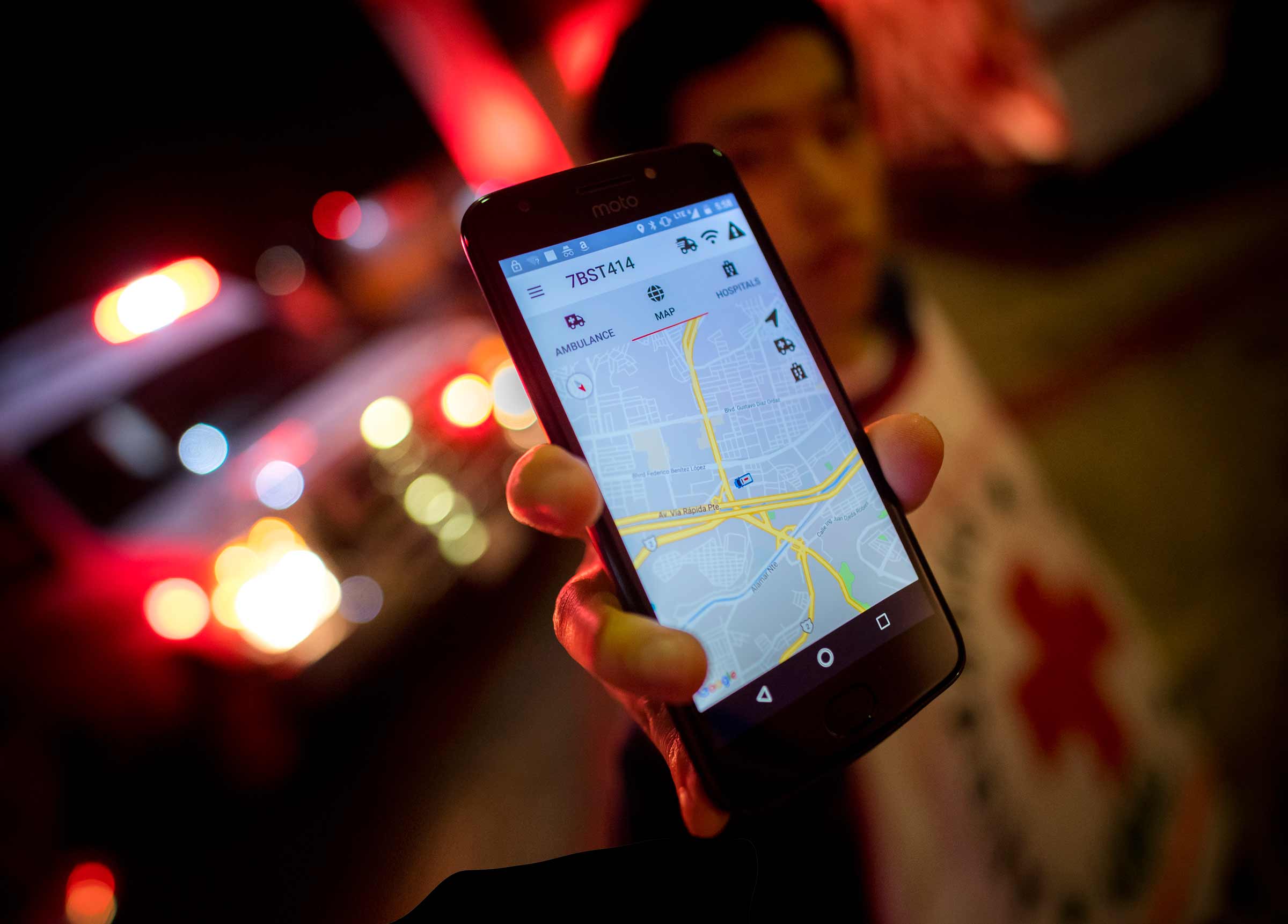
Undergraduate students on the Cruz Roja Global Ties team designed and built a mobile app to make ambulance dispatch in Tijuana easier, faster and more efficient. Photos by Erik Jepsen/UC San Diego
In the Mexican border city of Tijuana, 13 ambulances, one fast response unit with an emergency physician and a rescue truck serve a city of almost 1.7 million people. Run by Cruz Roja—the Red Cross—these ambulances are dispatched by radios, without tracking in real time. This makes dispatching them effectively a challenge, with impacts on patients’ access to emergency care.
Students at UC San Diego’s Jacobs School of Engineering are creating a mobile application that will change that, making it easier and faster for emergency medical crews to provide lifesaving help when and where it’s needed.
“This is very exciting for us,” said Dr. Andres Smith, president of Cruz Roja Tijuana, medical director of emergency services for Sharp Chula Vista and a UC San Diego alumnus himself. “There’s an incredible value here in using this technology to better serve the people of Tijuana, and in the partnership between Cruz Roja and the Jacobs School of Engineering.”
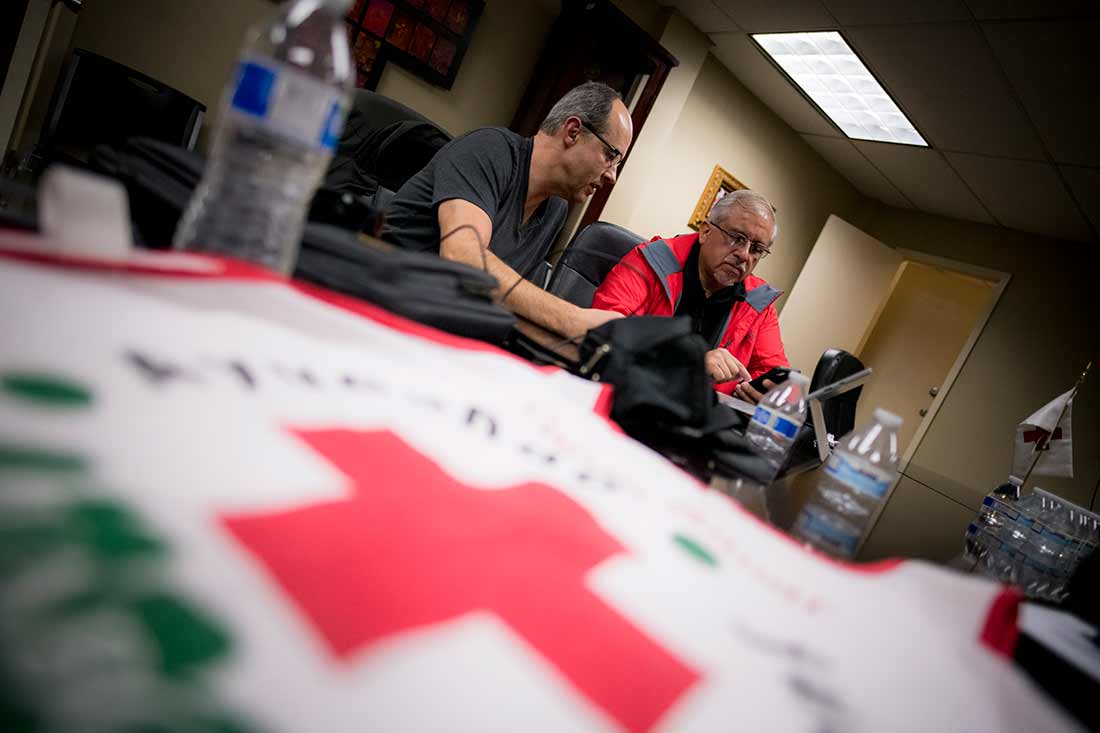
Mauricio de Oliveira, program adviser for the Cruz Roja project and a mechanical and aerospace engineering professor at UC San Diego, chats with Carlos Vera, a professor of medicine at Tijuana’s Universidad Autónoma de Baja California and board member of Cruz Roja Tijuana, about the app in Cruz Roja's headquarters in Tijuana on a recent team visit.
Current dispatch technology, which is responsible for alerting emergency medical crews to calls for help and directing them where to go, consists of radio communication and rudimentary GPS trackers in the Cruz Roja ambulances. Cruz Roja is the major emergency medical provider in Tijuana.
“They have some general location tracking devices but they are unreliable and sometimes inaccurate,” said Tim Lam, a computer science master’s student at UC San Diego who started working on the Global Ties Cruz Roja project as a computer science undergraduate, making him the longest-serving team member.
The team of students created a mobile application to assist with ambulance dispatch and response. Dispatchers can track the units through the app, know which units are available and which are already on a call, and then task the closest available unit to the emergency. Students are working to one day incorporate predictive traffic patterns into the map interface of the app, using historical data and machine learning.
The ambulance tracking and dispatch app has been completed and is currently in a testing phase before full implementation.
“The app helps Cruz Roja track the location of ambulances within the city, and also receives dispatch calls,” Lam said. “Now, all dispatchers have to do is go on the web portal, click on an ambulance and click ‘dispatch,’ and it will automatically respond. You’ll see the live directions on the map and details regarding the trip, such as what kind of injuries were reported.”
In addition to optimizing ambulance service to provide faster care, a secondary benefit of the app is that it will help Cruz Roja cut its operation costs by more efficiently dispatching ambulances.
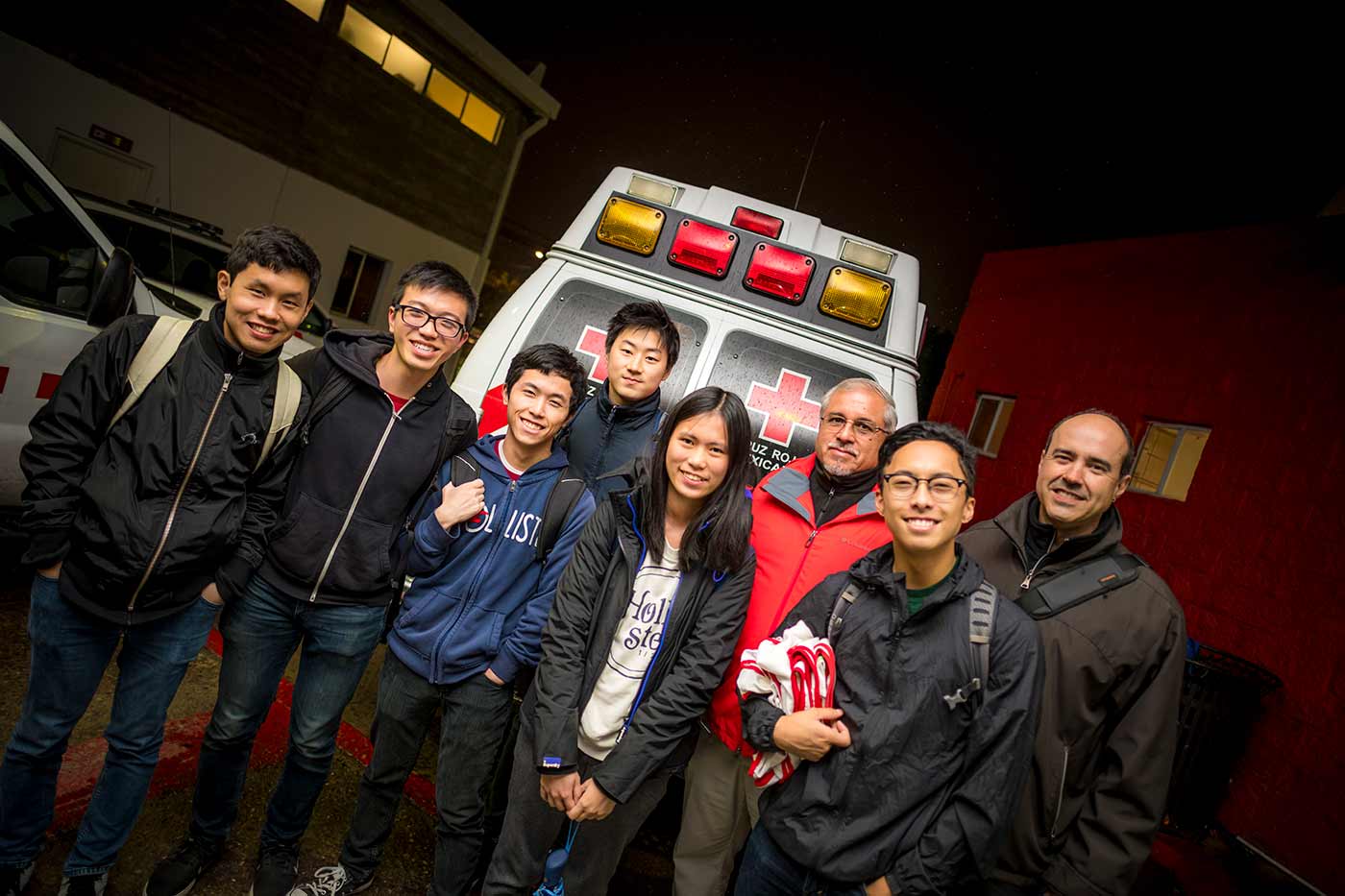
Several members of the Global Ties Cruz Roja team in Tijuana. The team visits their partner organization regularly to share progress on the app, and ensure it's meeting Cruz Roja's needs.
“The technology will be leveraging the resources that are already there,” said Mauricio de Oliveira, program advisor for the Global Ties Cruz Roja project and a mechanical and aerospace engineering professor at UC San Diego. “That’s the key to making it widespread. If a lot of resources are required, it might be something that people are unwilling to try because they would need to invest.”
The app runs on Android operating systems since Androids are cheaper and easier to set up than other platforms, and each Cruz Roja ambulance already has an Android phone onboard.
With the app running on cell phones, there is no need for investment from Cruz Roja Tijuana or the hospitals.
“I think in lots of places there will be no need for more than that,” said de Oliveira. “We’re focusing on real-time location of the ambulances, and helping the dispatcher contact the ambulances and dispatch the calls in a better way.”
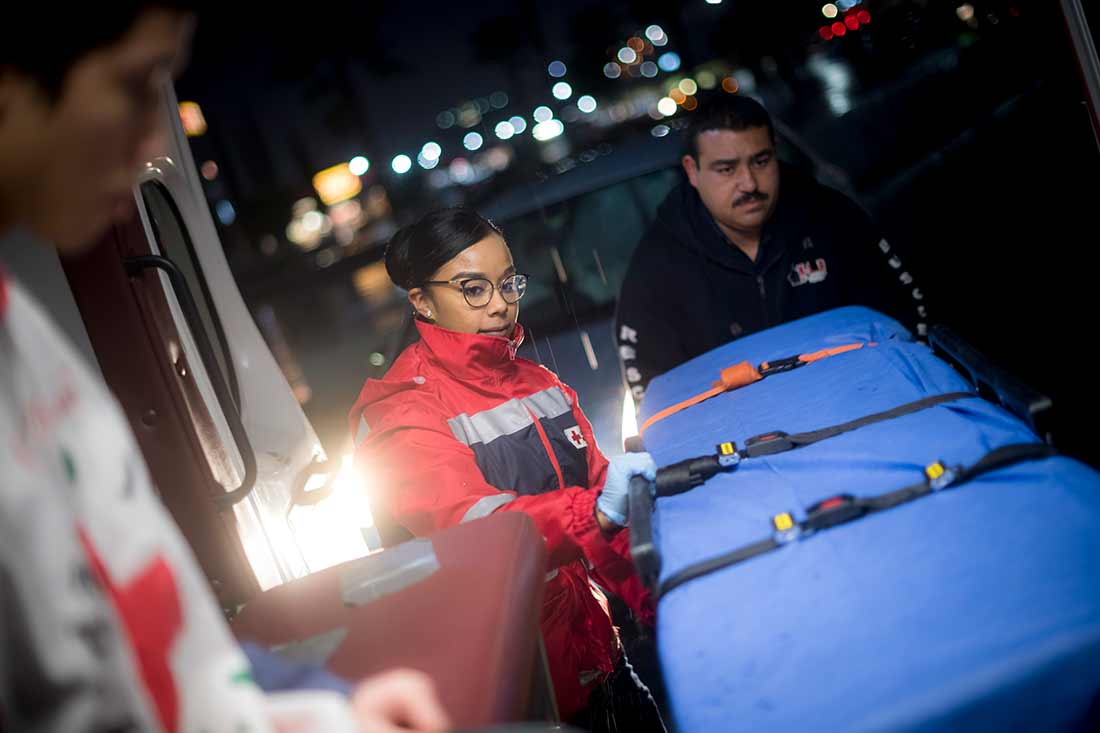
Students ride along on ambulances with Cruz Roja emergency responders to test the app in the setting it will be used.
The students have tested the technology on several trips to Tijuana. They ride along with Cruz Roja responders to see how the system works in real-world conditions, meet the emergency medical technicians that will use the app, and gather user feedback.
The project is part of the Global Ties program, a course-based social innovation and sustainable community development program offered by the Jacobs School of Engineering. It partners interdisciplinary teams of UC San Diego students with nonprofits and non-governmental organizations to co-create solutions to socially urgent problems.
The Cruz Roja project was established when Carlos Vera, an alumnus of the Jacobs School of Engineering, a professor of medicine at Tijuana’s Universidad Autónoma de Baja California and board member of Cruz Roja Tijuana, saw a great opportunity to save lives by harnessing technology.
He told de Oliveira about the unreliability and costs of the radio dispatch system while they were teaching at the COSMOS summer program at UC San Diego together.
“Carlos mentioned all the problems that he wanted to work on there, and we agreed to work on those problems together,” recalled de Oliveira. “Then about four years ago, we worked with some folks at Instituto Tecnológico de Tijuana—they had students that were willing to get data from the operations at Cruz Roja, and we published papers on how to optimize the location of their bases.”
De Oliveira met Mandy Bratton, director of Global Ties, shortly after, and mentioned that it would be great to implement some of the things they wrote about in the paper. In order to make that a reality, real-time data on Cruz Roja operations was necessary. The Global Ties project was formed to fill that need, but has grown far beyond this one use.
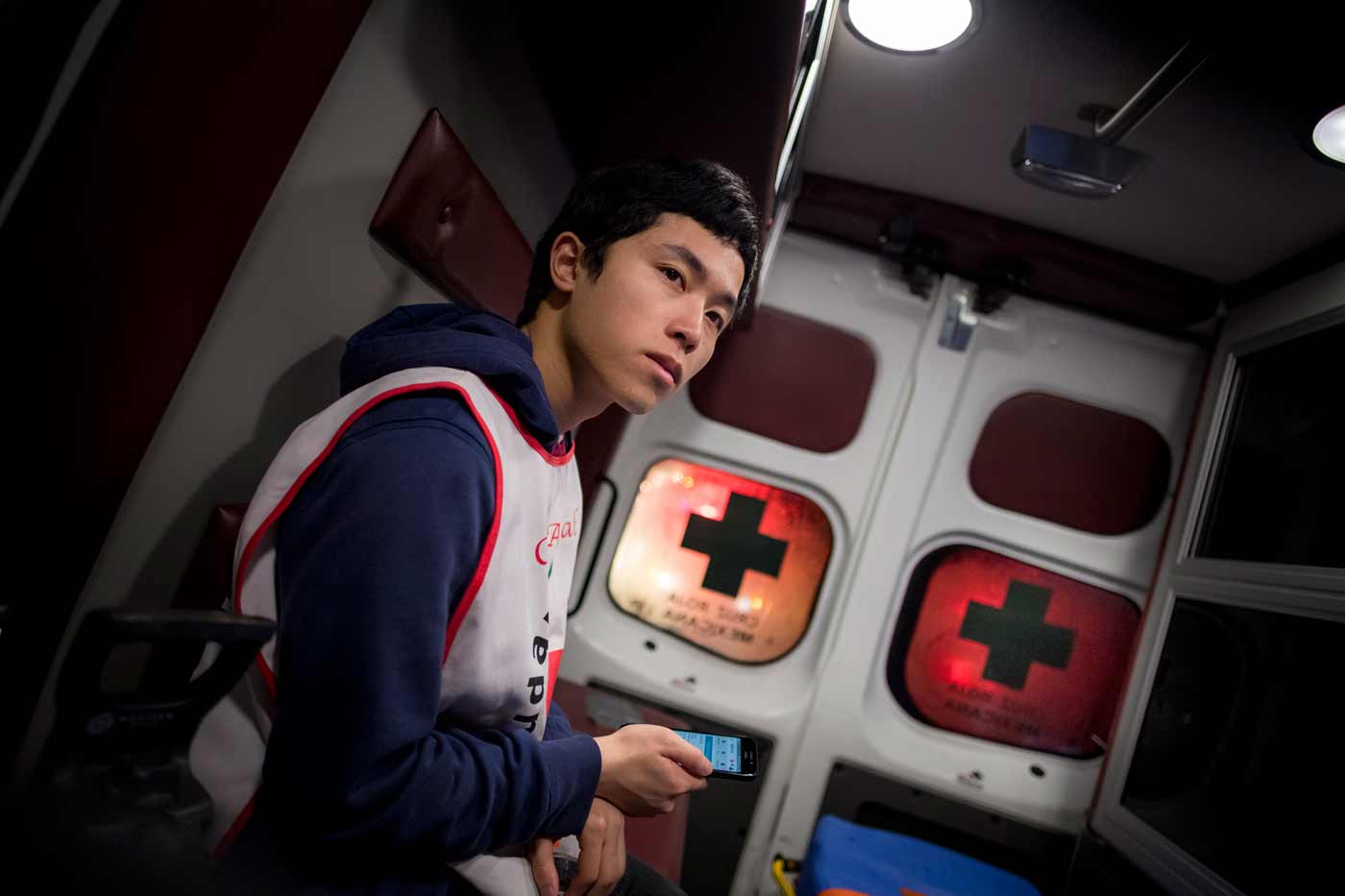
Leon Wu, a computer science student and Cruz Roja team member, makes sure the app is functioning as expected on a Cruz Roja ambulance ride along.
“The technology we’re developing isn’t just for Tijuana,” explained Lam. “It’s not just a one-city thing. It’s very scalable. It’s all online, and it’s pretty flexible.”
After it’s fully implemented, the team will focus on using the data the app is collecting to provide predictive analytics and information to Cruz Roja.
“From my point of view, that’s where the fun begins,” de Oliveira said. “Because then as we have access to real-time data, we can start tackling the interesting problems of how we can optimize ambulance dispatch, and other areas where machine learning can be really beneficial.”
Queenie Li, a fourth year computer science student, said this course has been one of her favorites.
“We’re building something that will actually be implemented and be used to make people’s lives better, which is exciting” Li said. “Plus, I’ve gotten to learn a lot about Tijuana and how emergency care systems work by going there and riding along with the crews.”
Other long-term plans for the Global Ties Cruz Roja project include developing a second app—this one for hospitals—that will track the availability of equipment like hospital beds, X-ray machines, and operating rooms in the Tijuana area. This will give the emergency medical technicians more information as they decide which hospital to transport patients to.
Global Ties is part of the Jacobs School’s Experience Engineering Initiative, which aims to give every engineering and computer science undergraduate student at UC San Diego a hands-on or experiential engineering course or lab each and every year.
Share This:
You May Also Like
Stay in the Know
Keep up with all the latest from UC San Diego. Subscribe to the newsletter today.


